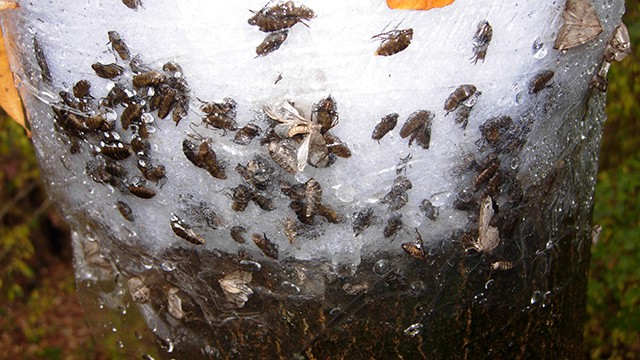Has Mississauga Gotten Rid of Horrifying Insects?
Published June 2, 2018 at 6:06 am

During this year’s program, the city sprayed more than 22 Mississauga neighbourhoods.
The spray area consisted of 4,794 acres of land. That’s about 1,552 football fields.
“The implementation of the spray was a success with everything going according to plan,” said Jamie Ferguson, Project Lead, Aerial Spray at the City of Mississauga. “We’re grateful that the weather conditions worked in our favour. We were able to conduct the spray in the correct timing window to ensure effective results.”
In the past few years, Mississauga has seen a huge increase in fall cankerworm and gypsy moth caterpillars.
These caterpillars can cause severe defoliation of trees and impact the health of many trees in the city.
“It’s still early to know the final success of the spray program. We knew that the spray won’t eradicate all traces of fall cankerworm and gypsy moths in the city; however, it will naturally lower populations to a more manageable level,” said Ferguson. “We’ve already started to see signs that the spray has had a clear effect in reducing cankerworm and gypsy moth caterpillars in severely affected areas.”
While the aerial spray has been completed, the city will continue its Integrated Pest Management (IPM) measures.
Over the next few weeks, forestry staff will work with BioForest to conduct surveys on leaf defoliation on city property trees. In the fall, staff will start evaluating how many eggs are left.
“This was the first spray the city conducted in more than 10 years, so a lot has changed from the way things were done in the past. There have been many advances in technology which really affected how we communicated to residents,” said Jodi Robillos, the new Director of Parks and Forestry.
The city isn’t planning any further sprays this year.
“I am proud of all the hard work and effort put forward by the city’s forestry team to make this program seamless and successful. I am also grateful for all the patience and support we received from residents living in the spray zones,” said Robillos. “The noise from the low-flying helicopters most likely wasn’t the nicest wake-up call at 5 a.m. We apologize for any inconvenience the aerial spray logistics may have caused.”
To make sure the cankerworm and gypsy moth populations stay in the normal range, residents are being asked to check trees on their property for eggs.
Residents can also help by destroying eggs, placing sticky bands on tree trunks, installing burlap skirts around tree trunks, destroying pupae and using pheromone traps.
Photo courtesy of the City of Toronto
insauga's Editorial Standards and Policies advertising





